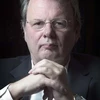- Introduction
- The new paradigms
- The "marriage de raison" between HR and strategicthinking
- Are we attracting Talent?
- The consequences for managementdevelopment
- The desired culture
- Recommendation: reenergize HR
introduction
In "the good old days," many P&O managers acted as part ofthe management team to bridge the regular problems that came upbetween top management and labor people. They relied on theirexperience as troubleshooters and promoted the basic feeling amongboth parties that everything was under control; "Im OK youre OK"was in vogue.
It was not easy to gain trust from both labor and management,but with enough expertise in and knowledge about payroll systems,labor/tax regulations, training and recruitment, it was not verydifficult to survive. When a conflict arose, the P&O managercould always say that it was his boss' decision. That was thesituation in the old business model.
In his book, HR Champions , Dave Ulrich, one of the mostfamous HR professors and consultants in the world says,"Thedeliverable from the management of strategic human resources isstrategic execution." That is a much more powerful statement thanever before. HR always exceeded, even in the old days, theimportance of the P&O function, but many HR officers in globalcompanies did little more than improve on the P&O's work. Timeshave changed drastically and now, because we are in the middle ofthe digital revolution with a substantial paradigm shift in values,markets and cultures, we have to be conscious of those changes thatare a result of the new E-Business model.
the new paradigms
The most dominating change of the new model in the marketapproach is in essence that the customer is more and more themaster of his own destiny. To promote this shift, customers needthe freedom to communicate interactively everywhere and withouttime limits. There are no narrow borders anymore. We need newcompetencies especially in marketing and communication based on afundamental insight of information technology. (See my article"Vision on Management in the Digital Age" in M@n@gement .) Most European companies lack this know-how andcompared to their US counterparts, certainly those on the WestCoast, are at least three years behind.
The result is that the modern HR manager is increasinglybecoming the key for managing change, especially as he gainsgreater understanding of what is going on. He has to take greatcare in the recruitment and training of talents to bridge thestrategic gap. Unfortunately, a top-quality manager of this type isa rare phenomenon and this scarcity is one of the reasons that manyglobal companies in the coming years are heading for an acutecrisis. In addition, many executives supervising HR managers dontsee the need for drastic change either. These bosses think thatthere is no revolution. They may end up having the same experienceas the last King Louis XVI of France who was still enjoying hisgreat parties, unaware that the revolt of the people was already inprogress. As result, he lost his head under the guillotine.
the "marriage de raison" between HR and strategic thinking
"Contributions of HR divisions as strategic partner: avoidstrategic plans on the top shelf, create a balanced score card,align HR plans to business plans, watch out for quick fixes, andcreate a capability focus within the firm," is another quote ofDave Ulrich,followed by his recommendations: "Focus on theintegration of business and HR planning; Line managers and HRprofessionals work as partners to ensure integration. Outcome: planto highlight HR practices that are priorities." And indeed, themodern HR officer has to think fundamentally how he and his crewcan contribute to necessary change in the company. He has to beproactive, has to take part in discussions about innovations, andhas to figure out how he can make his people aware ofunavoidable change.
Management training is the ideal match not only to achieveawareness but also to "marry" strategic thinking withimplementation. It is a requirement for all large companies asemployees cope with new ways of doing business. Management shouldbe confronted with the new issues of their business; they shouldselect the critical success factors and work in teams to realize atleast a few of the numerous opportunities. If we add moderncommunication systems into a global company, exclusively throughIntranet or Internet, we force management into modern interactions.Companies like Cisco have been practicing this for years. By usingmodern technology, costs can be reduced substantially especially inmarketing and sales, accounting, and order intake.
Training has to facilitate the merger of all these processes.Nevertheless, insufficient training or no training can never be analibi for a lack of innovation; that remains the pre-eminentresponsibility of top management.
are we attracting Talent?
Most companies with the old business model are apt to hirepersonnel from technology and marketing backgrounds to acquire newcompetencies. Soon they will ask a basic question: Are we on theshortlist of talented people? And the answer most of the time is"no." There are at least two reasons for this:
Many managers of companies with the old business model talkimpressively about change but they remain bureaucrats with littleor no innovation capability. Top management prefers control andoften kills any form of creativity, perhaps without realizingit.
Many young talented people from business schools and otheradvanced educational institutions prefer to work for a promisingincubator rather than an established company because they like theentrepreneurial challenge and tremendous career opportunities.
The problem of being an unattractive company must be solved inorder for the company to survive, especially given the hugescarcity of skilled people. Attractive means that thecompany will need to be profiled more and more as an E-Business,which then becomes "normal business". To achieve the level of themost admired companies, Fortune (October 1997) produced thefollowing shortlist:
- Managers take their (new) missions seriously.
- Success attracts people.
- Selection is executed with the most advanced tools.
- Internal promotion has priority and incentives, too.
- These companies are interested in the opinions of theirpeople.
The last element is an important precondition for innovation."Intellectual curiosity, the desire to understand, is derived froman urge as basic as hunger or sex: the exploratory drive," urgeRobinson and Stern in their book, Corporate Creativity. Itis clear that a company has to seed, harvest and retain talents: beas attractive as possible with a new business model.
A negative case
A big and very successful multinational company had neverinvested systematically in HR approaches or in PR connected to newtalents e.g. campus presentations. They judged that a newly offeredinnovative training program would be very useful, since it couldhelp their people to become more aware of the basic trends in thenew digital developments that might be interesting for them.Finally, they brought forward budget reasons to implement only thenew knowledge part- university education- but without a guidelinefor the process approach. The money, as a consequence, was merelythrown away and the program became contra-productive because theattendees were aware of the new developments but had no follow upwhatsoever. As a result, the real talents are now quitting thecompany.
the consequences for management development
Clayton Christensen in The Innovator's Dilemma, the 1997 Book of the Year for theFinancial Times, has a warning for bureaucrats: "Great Companiescan fail precisely because they do everything right". The newgeneration has to be more entrepreneurial than ever before.Selection criteria are creativity, risk taking, courage, andconvincing power. In his new book, HR Tomorrow Management,Dave Ulrich stresses the point that the employee is acting beyondthis description, more and more as a "volunteer."
Employability is a given issue, and as the employees take moreand more responsibility for their own career, the shift is awayfrom the command and control structure. (See table 1.)

Talents in the digital age
Megaconcerns
A positive case
A CEO from another very successful multinational companycommitted, from the very beginning, his professional HR peopletogether with a few very experienced senior managementrepresentatives to necessary strategic change. He ordered to setupa strategic agenda with the most important strategic spearheads andthe connected conditions for success. The line managers becameaware that HR could benefit their bottom line by helping to create:another culture, better connected training, and recruitmentprograms. The HR people realized that they had to delivermeasurable results. Both categories learned to own the process andthe CEO acted as facilatator to that. As a result, talents feelgreatly attracted by this approach.
It is difficult to understand a company that puts a zeroinvestment into HR training and argues that, in these days ofself-rule, the responsibility for training is that of the managersthemselves, rather than that of the company. A big company, withoutstrong HR people who feel obliged to stimulate strategic change,can hardly survive. In the service business and in nearly allindustries, everything is people business.
We might recruit future HR managers from the best innovativegeneral managers so that they are part of management development.This is preferable to looking for the latest fashion in HR skills.HR managers have to be more entrepreneurial and superiorstrategists than in the past. They have to understand theconstraint of change and the influence of technology. A top HRperson is certainly a potential CEO, and at least, a Boardmember.
the desired culture
In the digital age, a new culture has to be created in which thenew marketing and technology competencies have their place. Thishas to be mixed with valuable elements of the old culture. It is ahighly complex and long-term process with many chances forbreakdown. Geert Hofstede designed his "Onion Model" in his bookCultures and Organizations, a famous analysis to investigatecultural differences. The model also can be used to determine whichcultural climate generally has to be obtained. The picture might beas follows:

Change in culture
The backbone of the new culture consists of five differentvalues.
First, there is leadership. The growth potential of manybusinesses in the digital age is overwhelming, but choices aredifficult and complex, and the connecting risks are huge. So werequest more leadership in order to make the rightdecisions.
Second, nobody can act alone, not even mega companies. All ofthem need partnerships (see my article with colleague Westphal, "Without Partnering, No Effective Web Strategy" ). Therefore,alliances are unavoidable.
Third, time is moving fast and many inventions are constantlychanging the world; innovation is a continuous event.
Fourth, in the digital age everything is driven by technologyabout communication.
Finally fifth, with all these different interests, partnershipsand uncertainties, we need a close look at balanced valuecreation, because many people want their share.
recommendation: reenergize HR
If we really want to mobilize the HR function, we will have todo a lot. First the HR managers must act as strategists andcontribute to the bottom line. They have to develop a pro-activeapproach and take an active role within management teams. They willbenchmark their own HR policy with the best high-tech companies,not necessarily those in their own industry. They will constantlycheck customer and market focus not only from front-runners butalso from all their people. They will measure employeesatisfaction, develop new recruiting criteria, and launch newcompensation models. Finally, they will introduce cross-disciplinejob rotation (including HR). The HR staff will be smaller andsmaller because systems are part of the knowledge base, but thissmall expert team will be very influential in taking care of themost valuable asset of a company: management.
Debijdragen in m@n@gement van onze correspondent in SiliconValley oogsten veel waardering. Burt Rost van Tonningen heeftzijn bijdragen verwerkt en gebundeld in een integrale visie opE-commerce, E-organization en E-strategy met als titel:
"PREPARING FOR THE E-TORNADO:
Observations from a European in Silicon Valley"
In november 2000 heeft Holland Business Publications dit boekgepubliceerd. U kunthet on-line bestellen .


Deel uw ervaringen op ManagementSite
Wij zijn altijd op zoek naar ervaringen uit de praktijk, wat werkt wel, wat niet.
SCHRIJF MEE >>
Als u 3 of meer artikelen per jaar schrijft, ontvangt u een gratis pro-abonnement twv €200,--